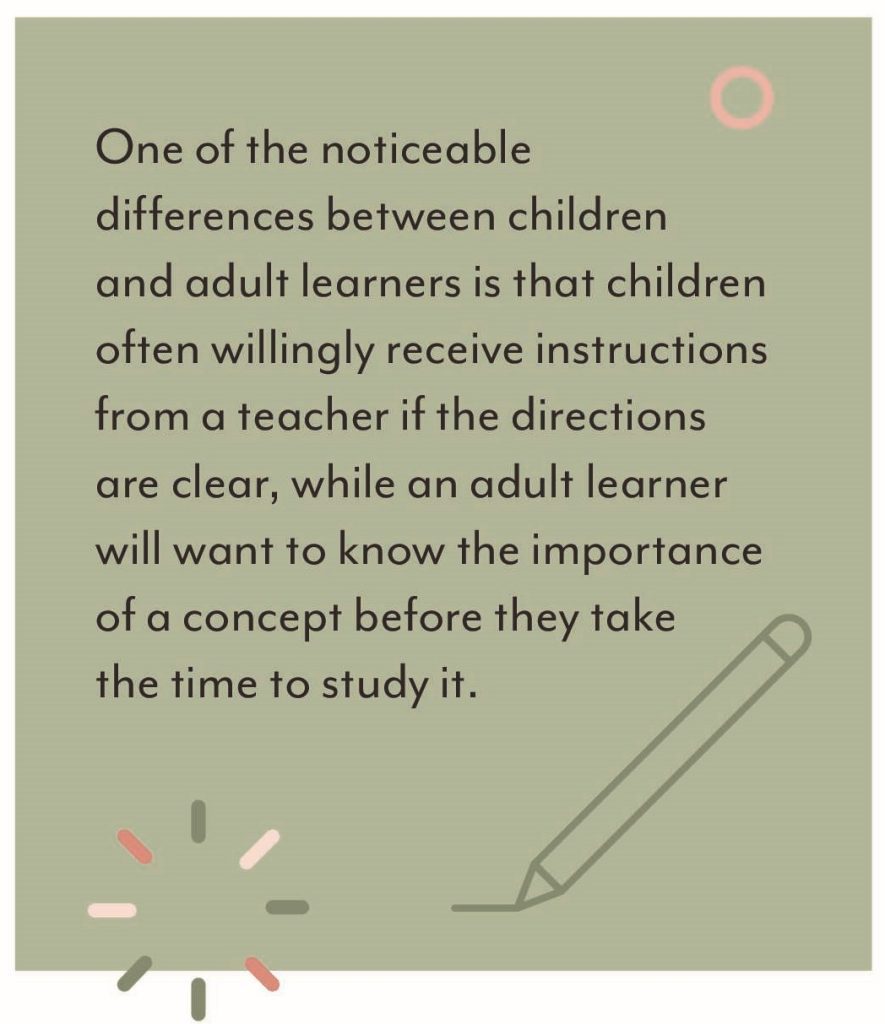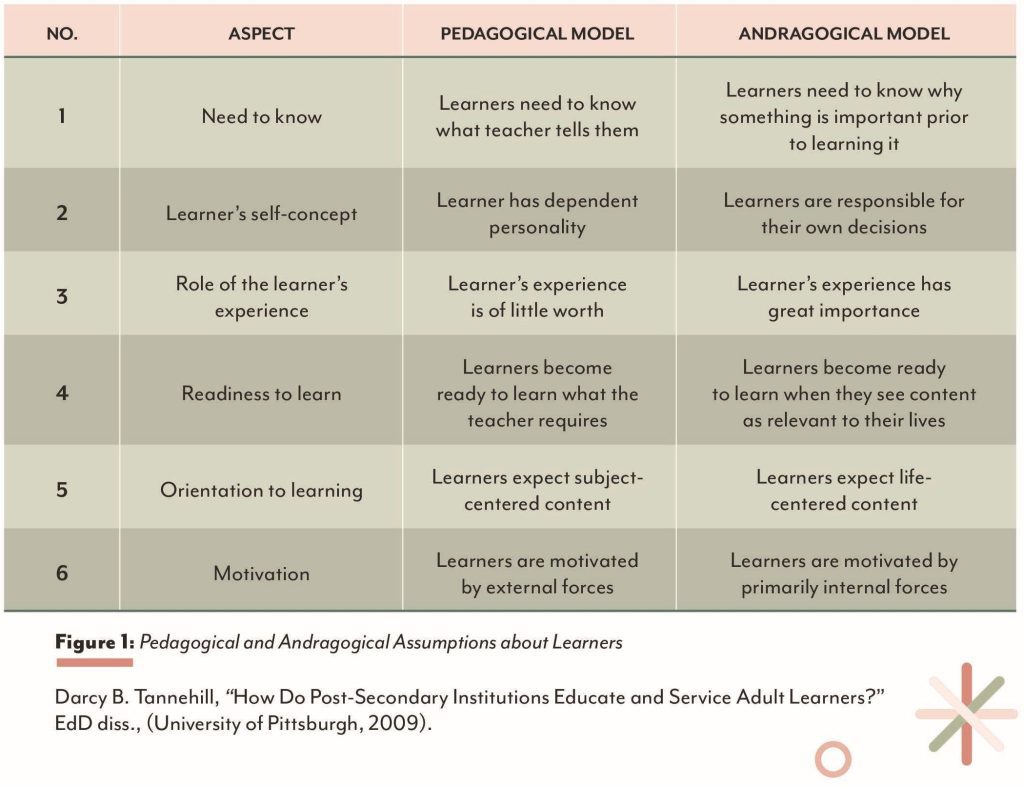We would like to thank Melody Morrison, who was named the winner of the 2023 Collegiate Writing Contest, for this insightful article on adulthood and collegiate group piano. Are you a collegiate student interested in submitting your writing to the Piano Magazine? We encourage all collegiate students to enter the 2024 Collegiate Writing Contest! Materials are due on May 1, 2024. To learn more and submit an article, click here.

Typical college students find themselves in a phase of life that has been identified as “emerging adulthood”— a time when characteristics of both children and adults are present in individuals who are in their late teens to early twenties.1 Collegiate group piano classes consist of mostly first- and second-year students (likely seventeen to twenty years old) and are in the beginning stages of emerging adulthood.2 Because the students who are in undergraduate group piano classes exhibit traits of children and adults, elements from both pedagogical and andragogical teaching approaches should be applied. It is therefore beneficial for a teacher to understand the teaching methodologies which highlight the adjustment of one’s teaching style according to the age of the student.3
This discussion will synthesize the research literature related to the differences between pedagogy and andragogy, and undergraduate class piano. In conclusion, implications and suggestions for teaching undergraduate class piano and this age population will be presented.
Pedagogy and Andragogy: History, Characteristics, and Differences
Pedagogy has often been used to encompass learning in all stages of life. However, the word “pedagogy” is derived from the Greek words paidos and agogus which translate to “child” and “leader of” respectively.4 Pedagogy, therefore, can be defined as the art and science of teaching children.5 European monks between the seventh and twelfth centuries began to observe how children learn and developed the first pedagogical concepts. Ideas from this era were eventually seen in schools throughout Europe and North America in the eighteenth and nineteenth centuries, and educational psychologists continued to study and develop the pedagogical model.6
A new focus on effective adult learning within the United States in the 1920s demonstrated that pedagogical concepts did not appear to work with the same success rate in adult students. Different teaching methods for adults began to develop throughout the twentieth century, and in the 1960s American educator Malcolm Knowles popularized the term andragogy. Andragogy originates from the Greek words aner whose stem andra means “man,” not “boy,” and agogue which means “leader of.” Knowles emphasized that andragogy was different from pedagogy, the latter referring to the education of children.7

The differences between pedagogy and andragogy can be summarized in six “assumptions” found in Figure 1.8 One of the noticeable differences between children and adult learners is that children often willingly receive instructions from a teacher if the directions are clear, while an adult learner will want to know the importance of a concept before they take the time to study it. Adult learners also carry with them many life experiences which will affect numerous areas of their learning.9 Children on the other hand come to a learning environment with more of a “clean slate.” Another difference between pedagogy and andragogy is that children often are motivated by outside forces, while adults demonstrate more internal motivation.10 Lastly, adults have shown preference toward self-directed learning.11

If you enjoyed this excerpt from Melody Morrison’s article “Emerging Adulthood and Undergraduate Group Piano,” you can read more here: https://pianoinspires.com/article/collegiate-essay-winner-emerging-adulthood-and-undergraduate-group-piano/.
MORE ON GROUP PIANO
- MAGAZINE ARTICLE: Collegiate Essay Runner-Up: The Unrecognized Performing Art of Group Piano Teaching by Dominick Cristofori D’Alessandro
- MICROCOURSE: Teaching Collegiate Group Piano (from A Pianist’s Guide to Teaching in Groups)
- MAGAZINE ARTICLE: Tools for Group Piano Online by Alejandro Cremaschi
- MAGAZINE ARTICLE: Incorporating Metacognition into the Group Piano Curriculum by Joann Marie Kirchner
- MAGAZINE ARTICLE: Teaching Adults in Group-Piano Settings: Facilitating the Musical Process by Pamela Pike
- COURSE: A Pianist’s Guide to Teaching in Groups
Not yet a subscriber? Join for only $7.99/mo or $36/yr.
SOURCES
1 Jeffrey J. Arnett, “Emerging Adulthood: A Theory of Development from the Late Teens through the Twenties,” American Psychologist 55, no. 5 (2000): 469–480.
2 Christopher Fisher, Teaching Piano in Groups (New York: Oxford University Press, 2010); Pamela D. Pike, Dynamic Group-Piano Teaching (New York: Routledge, 2017).
3 Malcolm S. Knowles, The Modern Practice of Adult Education: From Pedagogy to Andragogy (Englewood Cliffs: Cambridge Adult Education, 1980); Joseph Mews, “Leading through Andragogy,” College and University 95 (2020): 65–68.
4 Malcolm S. Knowles, The Adult Learner: A Neglected Species (Houston: Gulf Publishing Company, 1973); Malcolm S. Knowles, Elwood F. Holton III, and Richard A. Swanson, The Adult Learner (New York: Taylor & Francis, 2012).
5 Geraldine Holmes and Michele Abington-Cooper, “Pedagogy vs. Andragogy: A False Dichotomy?” The Journal of Technology Studies 26 (2000). doi.org/10.21061/jots.v26i2.a.8
6 Knowles, The Modern Practice of Adult Education.
7 Ibid.; Joseph Davenport, “Is There a Way Out of the Andragogy Morass?” Lifelong Learning 11, no. 3 (1987): 17–20.
8 Darcy B. Tannehill, “How Do Post-Secondary Institutions Educate and Service Adult Learners?” EdD diss., (University of Pittsburgh, 2009).
9 Sang Chan, “Applications of Andragogy in Multi-Disciplined Teaching and Learning,” MPAEA Journal of Adult Education 39, no. 2 (2010): 25–35.
10 James A. Draper, “The Metamorphoses of Andragogy,” Canadian Journal for the Study of Adult Education 12, no. 1 (1998), 3–26; Mews, “Leading through Andragogy.”
11 Sharan B. Merriam, “Andragogy and Self-Directed Learning: Pillars of Adult Learning Theory,” New Directions for Adult and Continuing Education, (Spring 2001): 3–14. doi.org/10.1002/ace.3